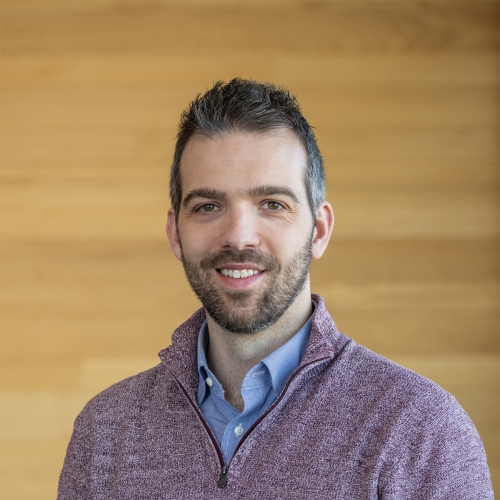
Available to mentor

Tristan Maerz, Ph.D. is an Assistant Professor of Orthopaedic Surgery and Biomedical Engineering. He completed his undergraduate studies in Biomedical Engineering at Lawrence Technological University, followed by his Master’s and doctoral training in Biomedical Engineering at Wayne State University. Prior to joining the Orthopaedic Surgery faculty at the University of Michigan, Dr. Maerz was a research engineer and the director of sports medicine research at Beaumont Hospital in Royal Oak, MI and held an Assistant Professor of Orthopaedic Surgery appointment at the Oakland University – William Beaumont School of Medicine. Dr. Maerz and his laboratory are part of the Orthopaedic Research Laboratories, an interdisciplinary faculty consortium within the Department of Orthopaedic Surgery, and he is interested in basic science, translational, and clinical research focused on sports medicine-related injuries and pathologies. Dr. Maerz is an active member of the Orthopaedic Research Society (ORS) and Osteoarthritis Research Society International (OARSI), which are his primary academic communities.
-
Center MemberGlobal REACH
-
Center MemberMM-PKUHSC Joint Institute
Dr. Maerz’ primary research area is the pathogenesis of post-traumatic osteoarthritis (PTOA) following joint injury, with a specific focus on the synovium and injury-induced molecular mechanisms that modulate the onset of joint degeneration. The Maerz laboratory has a strong translational focus, and each major research platform aims to discover druggable targets to develop novel, disease-modifying treatments for PTOA.
Given the expanding incidence of joint injury and the rapidly-growing burden of osteoarthritis and its associated musculoskeletal and non-musculoskeletal comorbidities, a critical need exists to alter the natural history of tissue degeneration following joint injury. To study the complex phenotype of PTOA, the Maerz lab employs multi-faceted assessments to discern in vivo molecular processes, gene and protein expression and content, pain sensitization, pathologic tissue remodeling, and cellular composition. A strong focus is placed on quantitative assessments of PTOA disease severity to minimize or eliminate subjective interpretation, and quantitative imaging is used heavily to strengthen the joint phenotyping approaches. The Maerz lab also employs multiple genetically-modified mouse models to dissect the molecular mechanisms of osteoarthritis.
The mission of the Maerz lab is to foster an inclusive and diverse environment in which innovative, multidisciplinary science can be conducted. Collegiality and collaboration are top priorities, recognizing that rigorous team science will be necessary to develop a successful treatment for PTOA.
-
Maerz T, Schiphof D. Osteoarthritis Cartilage, 2024 Sep; 32 (9): 1013 - 1015.Journal ArticleFrom cartilage to culture: Opportunities for unraveling the complexities of osteoarthritis through sex and gender.
DOI:10.1016/j.joca.2024.07.009 PMID: 39089612 -
Bergman RF, Lammlin L, Junginger L, Farrell E, Goldman S, Darcy R, Rasner C, Obeidat AM, Malfait A-M, Miller RE, Maerz T. Osteoarthritis Cartilage, 2024 Sep; 32 (9): 1060 - 1073.Journal ArticleSexual dimorphism of the synovial transcriptome underpins greater PTOA disease severity in male mice following joint injury.
DOI:10.1016/j.joca.2023.07.012 PMID: 37716404 -
Ramos YFM, Rice SJ, Ali SA, Pastrello C, Jurisica I, Rai MF, Collins KH, Lang A, Maerz T, Geurts J, Ruiz-Romero C, June RK, Thomas Appleton C, Rockel JS, Kapoor M. Osteoarthritis Cartilage, 2024 Jul; 32 (7): 858 - 868.Journal ArticleEvolution and advancements in genomics and epigenomics in OA research: How far we have come.
DOI:10.1016/j.joca.2024.02.656 PMID: 38428513 -
Kaur G, Pippin JA, Chang S, Redmond J, Chesi A, Wells AD, Maerz T, Grant SFA, Coleman RM, Hankenson KD, Wagley Y. JBMR Plus, 2024 May; 8 (5): ziae051Journal ArticleOsteoporosis GWAS-implicated DNM3 locus contextually regulates osteoblastic and chondrogenic fate of mesenchymal stem/progenitor cells through oscillating miR-199a-5p levels.
DOI:10.1093/jbmrpl/ziae051 PMID: 38686038 -
Rai MF, Collins KH, Lang A, Maerz T, Geurts J, Ruiz-Romero C, June RK, Ramos Y, Rice SJ, Ali SA, Pastrello C, Jurisica I, Thomas Appleton C, Rockel JS, Kapoor M. Osteoarthritis Cartilage, 2024 Apr; 32 (4): 385 - 397.Journal ArticleThree decades of advancements in osteoarthritis research: insights from transcriptomic, proteomic, and metabolomic studies.
DOI:10.1016/j.joca.2023.11.019 PMID: 38049029 -
Lee JYJ, Wu JC, Chatterji R, Koueiter D, Maerz T, Dutcheshen N, Wiater BP, Anderson K, Wiater JM. JSES Int, 2024 Mar; 8 (2): 282 - 286.Journal ArticleComplication rates and efficacy of single-injection vs. continuous interscalene nerve block: a prospective evaluation following arthroscopic primary rotator cuff repair without a concomitant open procedure.
DOI:10.1016/j.jseint.2023.10.008 PMID: 38464451 -
Jung J-Y, Habib M, Morrissette LJ, Timmons SC, Maerz T, Fields AJ. JOR Spine, 2024 Mar; 7 (1): e1297Journal ArticleNon-enzymatic glycation reduces glucose transport in the human cartilage endplate independently of matrix porosity or proteoglycan content.
DOI:10.1002/jsp2.1297 PMID: 38222801 -
Obeidat AM, Ishihara S, Li J, Adamczyk NS, Lammlin L, Junginger L, Maerz T, Miller RJ, Miller RE, Malfait A-M. Front Neuroanat, 2024 18: 1429124Journal ArticleIntra-articular sprouting of nociceptors accompanies progressive osteoarthritis: comparative evidence in four murine models.
DOI:10.3389/fnana.2024.1429124 PMID: 39076825